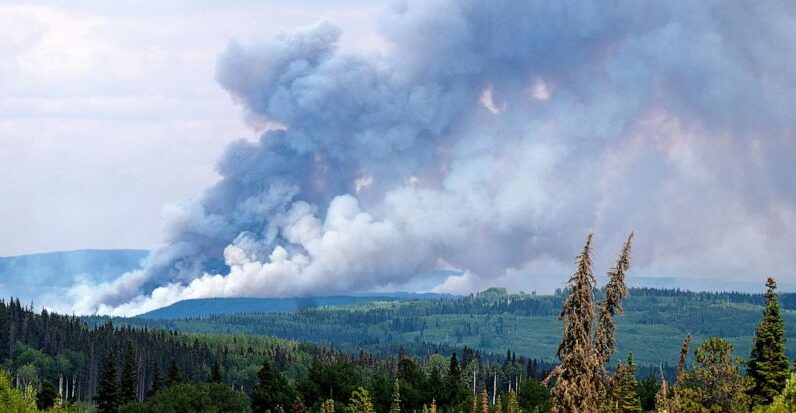
VANCOUVER, British Columbia — The wildfires raging across Canada have already broken records for the total acreage burned, the number of people forced to evacuate their homes and the cost of fighting the flames, and the fire season is only just around the corner. ‘is halfway over, officials said Thursday.
“It’s not an understatement to say that the 2023 fire season is and will continue to be a record in a number of ways,” said Michael Norton, director general of the Canadian Forest Service’s Northern Forestry Centre, during a briefing.
A health expert also warned that smoke from the fires could cause health problems for people living in both Canada and the United States.
“When you’re putting large amounts of fire smoke into the air and that smoke reaches populated areas, there are going to be health effects,” said Ryan Allen, a professor of health sciences at Simon Fraser University in Burnaby, Columbia. british
Norton said warm weather and dry conditions across Canada indicate the potential for higher than normal fire activity in July and August.
“Drought is a major factor affecting parts of all provinces and territories, intensifying in some regions,” he said. “When combined with above-normal temperatures forecast across most of the country, many parts of Canada are expected to continue to see above-normal fire activity.”
As of Wednesday, there were 639 active fires in Canada and 351 of them out of control. So far this year there have been 3,412 fires, well above the 10-year average of 2,751, Norton said.
The fires have burned 8.8 million hectares (27.7 million acres) an area the size of the state of Virginia. This already exceeds the record of 7.6 million hectares (18.7 million acres) set in 1989 and is 11 times the 10-year average experienced to date.
“The final area burned for this season may still be significantly higher,” Norton said. “What we can say with certainty right now is that 2023 is a record year, at least since 1986 when accurate records began to be kept.”
Allen said the fine particles found in fire smoke not only have the ability to penetrate deep into the respiratory tract, but can also travel long distances, meaning they could drift far into the United States.
There have been reports that fires in eastern Canada and Quebec are affecting air quality in Europe.
Allen said higher concentrations of smoke increase health risks to the lungs, brain, cognitive functions and even fetal development.
“Because it’s so far away, the concentration is unlikely to be as high as they are near the fire, so the health risk would be lower, but the health risk is probably not zero.” , he said.
Norton said the fires have forced about 155,856 evacuations, the highest number in four decades. Currently about 4,500 people remain under evacuation orders across the country with about 3,400 in indigenous communities.
Firefighting has taken on global proportions.
There are about 3,790 provincial firefighters fighting the blazes across the country with the help of Canadian Armed Forces personnel. Another 3,258 firefighters from Australia, South Africa, New Zealand, the US, Chile, Costa Rica, Mexico, Spain, Portugal, South Korea and the European Union have traveled to Canada to fight the fires.
Norton said the cost of fighting wildfires has grown steadily and is approaching C$1 billion (US$750 million) a year.
“With the scale of activity this year and the fact that we still have three months to go, I have no doubt that the direct cost of suppression will be a new record,” he said.
[ad_2]
Source link





